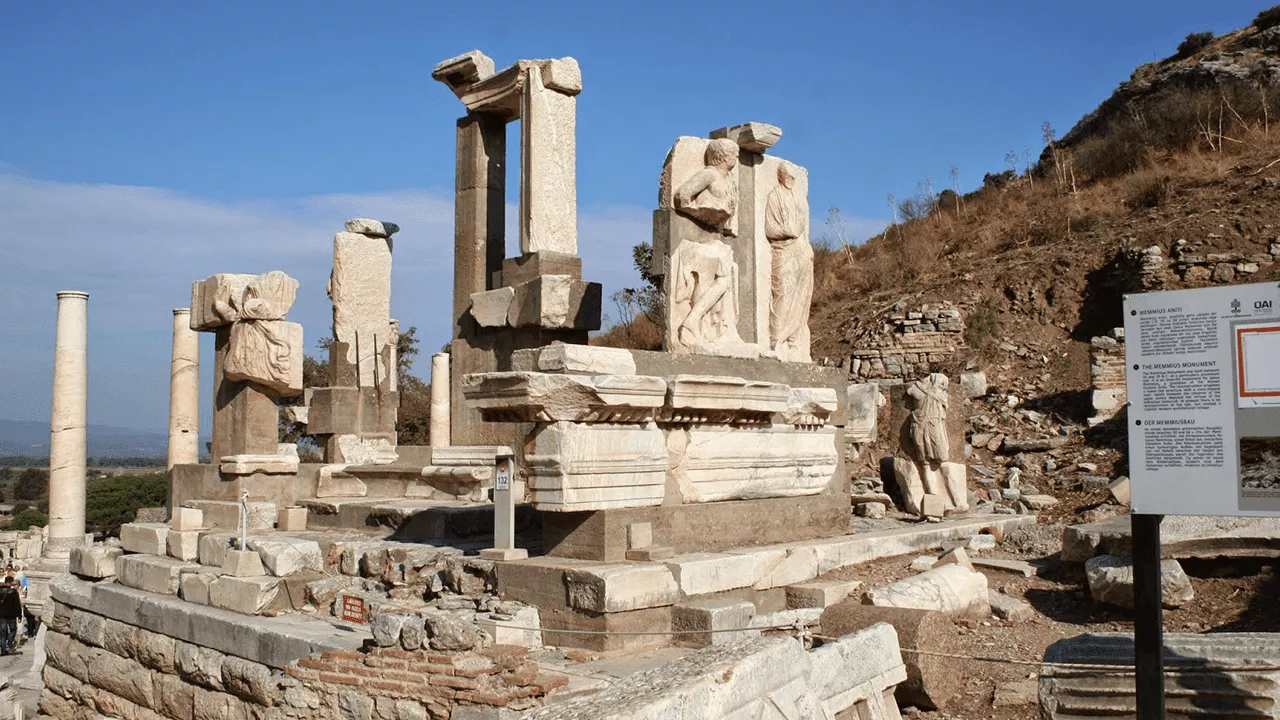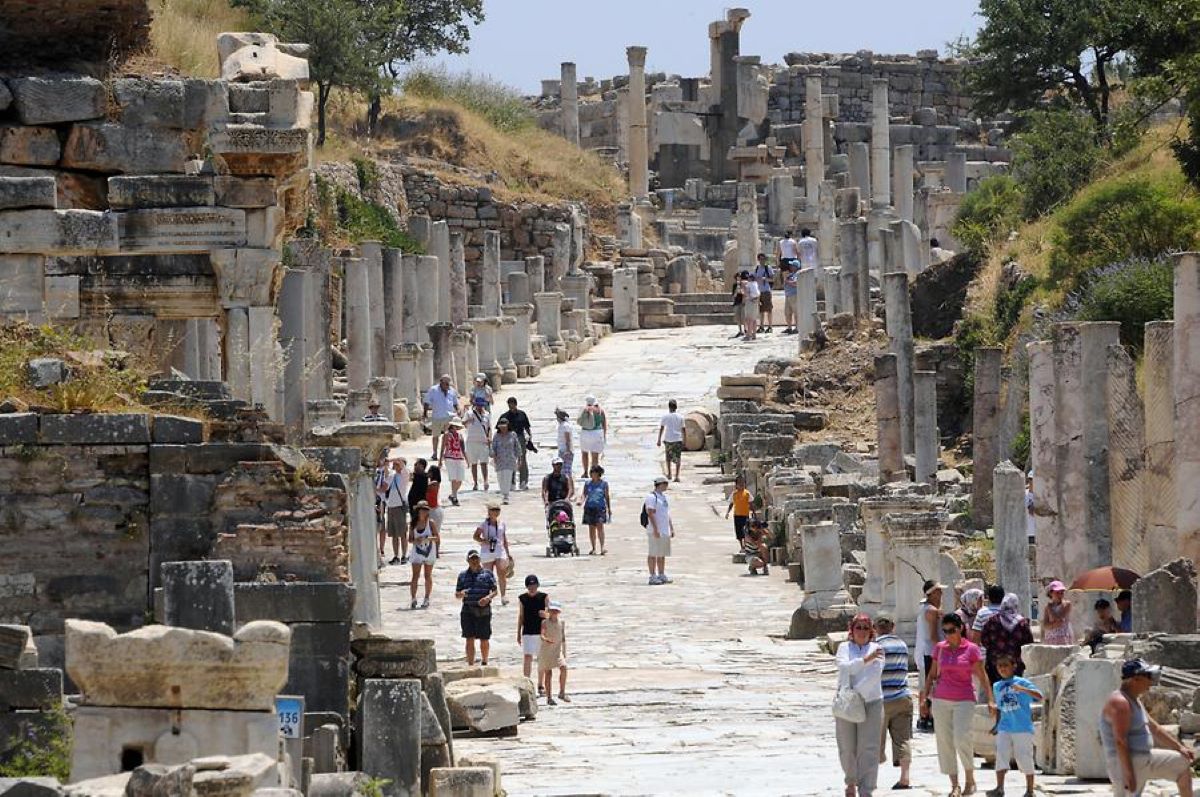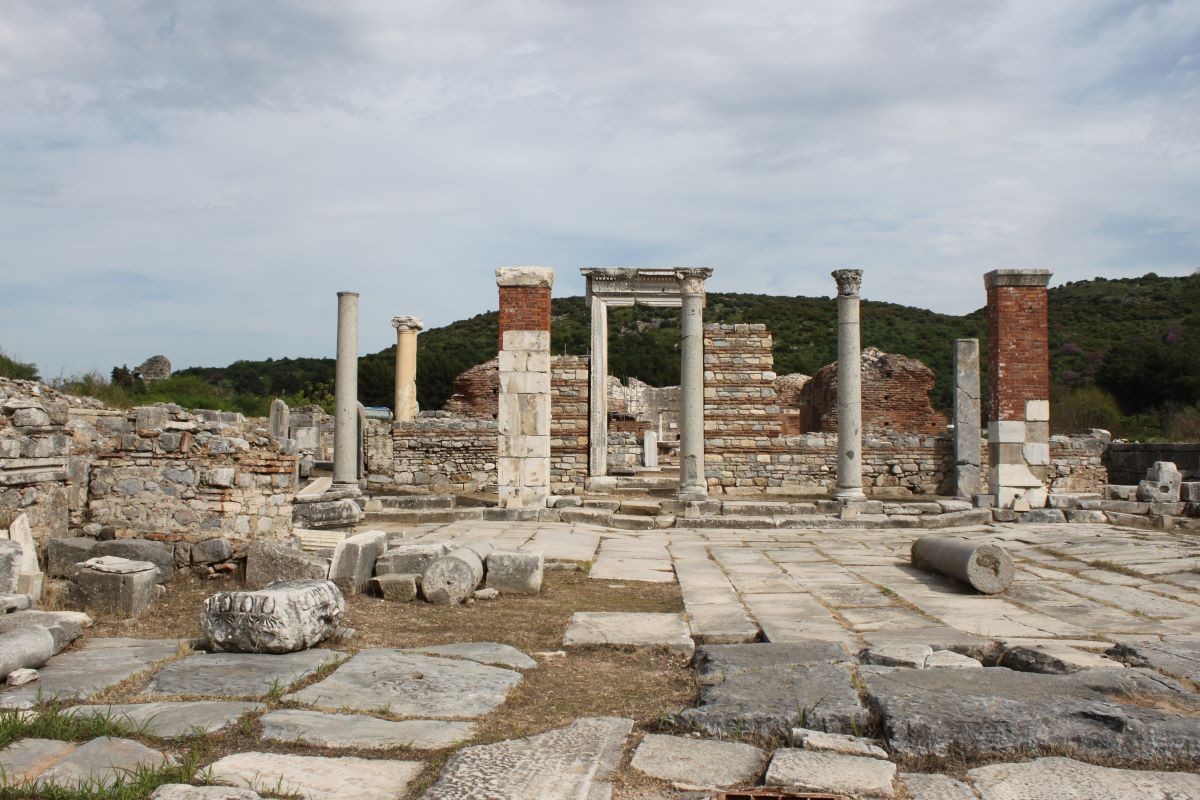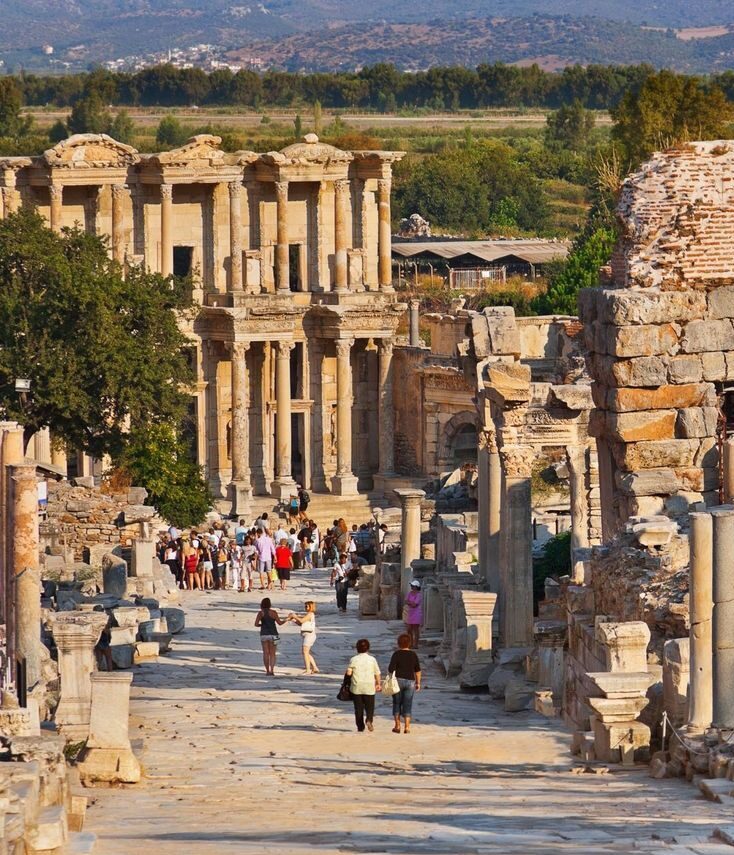The ancient city of Ephesus is a site of remarkable historical significance, with a…

The Memmius Monument in Ephesus: A Roman Triumph of Architecture and Art
The Memmius Monument, also known as the Memmius Monumentum or the Monumentum Memmii, is an ancient Roman structure located in the ancient city of Ephesus. It is one of the most important examples of Roman architecture and art in the eastern Mediterranean, and its elaborate decoration and impressive size make it a must-see attraction for visitors to the area.
Built in the 1st century AD during the reign of Emperor Augustus, the Memmius Monument was commissioned by Caius Vibius Salutaris Memmius, a wealthy Roman citizen and former governor of the province of Asia. The monument was dedicated to his family, and it served as a funerary monument for himself and his descendants.
The monument is located on Curetes Street, one of the main streets of Ephesus, and it was built on a raised platform that allowed it to tower over the surrounding buildings. The monument is made of marble and stands at a height of approximately 12 meters, with a rectangular base measuring 17 meters by 11 meters.
The Memmius Monument is notable for its elaborate decoration, which includes relief sculptures, inscriptions, and architectural elements. The monument’s façade is adorned with a series of six relief sculptures, each depicting a different scene from Roman mythology.
The first relief shows the god Apollo with his lyre, surrounded by a group of muses. The second relief shows the god Dionysus, the god of wine and fertility, surrounded by a group of maenads, or female followers. The third relief shows a scene from the Trojan War, with the hero Achilles dragging the body of Hector around the walls of Troy. The fourth relief shows the god Hermes, the messenger of the gods, with a group of satyrs and maenads. The fifth relief shows the goddess Athena with a group of men, possibly representing the Roman Senate. The final relief shows the god Zeus with a group of women, possibly representing the Roman people.
The reliefs are incredibly detailed and well-preserved, with intricate designs and lifelike figures. The relief of Achilles dragging Hector’s body around the walls of Troy is particularly impressive, with the figures depicted in dramatic poses and with expressions of agony and despair.
In addition to the reliefs, the Memmius Monument is decorated with several inscriptions, including one that honors Memmius and his family, and another that details the monument’s construction and dedication. The inscriptions are written in both Latin and Greek, reflecting the bilingual nature of Ephesus during the Roman period.
The monument is also adorned with several architectural elements, including columns, pilasters, and cornices. The columns are decorated with intricate designs, including acanthus leaves and other motifs, while the cornices feature decorative moldings and sculptural elements.
The Memmius Monument is a testament to the skill and creativity of Roman architects and artists, and it reflects the wealth and power of the Roman Empire during the 1st century AD. The monument’s elaborate decoration and impressive size would have been a testament to Memmius’ wealth and status, as well as his commitment to his family and their memory.
The Memmius Monument is also significant for its location in Ephesus, one of the most important cities of the Roman Empire. Ephesus was a major center of trade and commerce, and it was also an important religious and cultural center. The city was home to several important temples and shrines, including the Temple of Artemis, one of the Seven Wonders of the Ancient World.
The Memmius Monument was not only a tribute to a prominent Roman official, but also an impressive feat of architectural and engineering skill. The monument was designed in the Corinthian order, a classical architectural style characterized by slender columns with ornate capitals, and intricate friezes and moldings. The monument was also decorated with relief sculptures depicting scenes from the life of Memmius and his family.
The Memmius Monument was built on a high platform that was accessed by a grand staircase. The platform was surrounded by a colonnade, providing shade and shelter for visitors. The monument itself was a two-story structure, with the lower level consisting of a large chamber that was used for funerary purposes. The upper level was a smaller chamber that was likely used for religious ceremonies.
One of the most impressive features of the Memmius Monument was its elaborate waterworks. The monument was designed to have a constant supply of water, which was channeled through an intricate system of pipes and channels. Water flowed into a large pool in front of the monument, and then cascaded down a series of steps and fountains before draining into a nearby river.
The waterworks were not just for show, however. The constant flow of water was also used to power a number of mechanical devices, including a water clock and a hydraulic organ. The water clock was a device that kept time by measuring the flow of water through a series of bowls, while the hydraulic organ used water pressure to produce music.
The Memmius Monument was an impressive display of wealth and power, and a testament to the skill and ingenuity of the ancient engineers and architects who designed and built it. Today, the monument stands as a reminder of the rich history of Ephesus and the ancient world, and a testament to the enduring legacy of the Roman Empire.
Today, visitors to Ephesus can still see the ruins of the Memmius Monument. While the monument itself is largely destroyed, the remains of the platform, colonnade, and waterworks are still visible.
While the Memmius Monument may not be as well-known as some of the other ancient structures in Ephesus, it is still a fascinating piece of history that is well worth a visit. The monument’s elaborate waterworks and intricate design are a testament to the skill and ingenuity of the ancient engineers and architects who built it, and a reminder of the wealth and power of the Roman Empire.




This Post Has 0 Comments